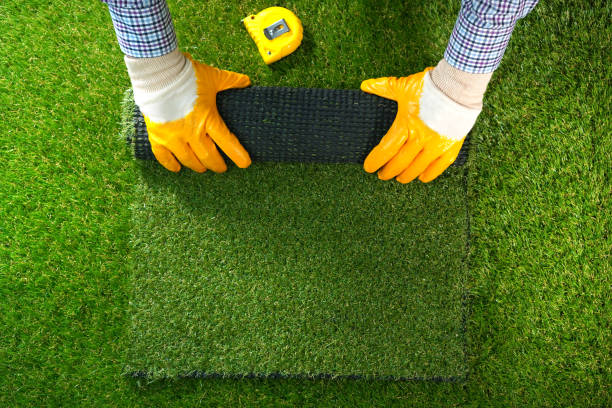Playgrounds are the epitome of childhood joy, providing a space where children can explore, play, and develop crucial social skills. As the demand for safer and more sustainable play environments grows, the role of surfacing materials becomes increasingly critical. Conventional surfaces, such as sand, gravel, or even real grass, provide several difficulties, such as uneven ground, upkeep problems, and the risk of injury. Artificial grass has become a game-changer in playground design in recent years, providing a more visually beautiful, long-lasting, and safe option.
The Safety Imperative
Safety is the top priority when it comes to playgrounds. Over 200,000 children under the age of 14 receive treatment in emergency departments every year in the United States alone for playground-related injuries, according to the Centers for Disease Control and Prevention (CDC). The selection of playground flooring is an important consideration for parents, educators, and community planners because these injuries frequently arise from falls onto hard surfaces.
Artificial grass, with its cushioned and even surface, acts as a protective layer that minimizes the impact of falls. Unlike natural grass, which can become uneven and pose tripping hazards, artificial grass provides a consistent and shock-absorbent foundation. This characteristic significantly reduces the risk of injuries, making it an ideal choice for creating a safe play environment for children.
Durability in Action
Playgrounds endure substantial wear and tear due to constant use and exposure to the elements. Traditional surfaces such as sand or mulch require regular replenishment and maintenance to remain effective, often resulting in ongoing costs and downtime for the playground. Artificial grass, on the other hand, offers remarkable durability, ensuring a long-lasting and resilient surface.
The synthetic fibers used in artificial grass are designed to withstand heavy foot traffic, extreme weather conditions, and the rough-and-tumble play of active children. This durability translates to reduced maintenance requirements, ultimately saving time and resources. With artificial grass, playgrounds can maintain their pristine appearance and functionality for years, providing a reliable and cost-effective solution for communities.
Aesthetics and Accessibility
Beyond safety and durability, the visual appeal of a playground contributes to its overall effectiveness. Artificial grass offers a lush and vibrant aesthetic that enhances the beauty of the play area. Its consistent green appearance creates an inviting and well-maintained atmosphere, contributing to an overall positive experience for children and their families.
Moreover, artificial grass promotes accessibility for children with mobility challenges. The even surface allows for smooth wheelchair navigation, ensuring that playgrounds are inclusive and welcoming to all. This aspect aligns with the principles of universal design, emphasizing the importance of creating environments that accommodate individuals of all abilities.
Environmental Considerations
While safety and durability are paramount, the environmental impact of playground surfacing materials cannot be overlooked. Artificial grass has undergone significant advancements in recent years, with a focus on eco-friendly materials and manufacturing processes. Many modern artificial grass products are made from recycled materials, contributing to the reduction of waste and resource conservation.
Additionally, the water savings associated with artificial grass are noteworthy. Natural grass requires regular watering to maintain its health and appearance, consuming significant amounts of water, especially in arid regions. Artificial grass eliminates this water usage, providing a sustainable solution that aligns with water conservation goals.
Installation and Maintenance Guidelines
Achieving playground perfection with artificial grass involves careful consideration of installation and maintenance practices. Proper installation is crucial to ensuring a flat and secure surface. Utilizing a professional installer with experience in playground applications is recommended to guarantee optimal safety and performance.
Routine maintenance is also essential to uphold the longevity and appearance of the artificial grass. Regularly removing debris, ensuring proper drainage, and addressing any issues promptly will contribute to a safe and enjoyable play environment. Many artificial grass products come with manufacturer guidelines for maintenance, providing a roadmap for optimal care.
Conclusion
As communities strive to create playgrounds that prioritize safety, durability, aesthetics, and sustainability, artificial grass emerges as a comprehensive solution. The benefits of artificial grass extend beyond its visual appeal, encompassing critical aspects like injury prevention, durability, accessibility, and environmental cconscientiousness.
In the pursuit of playground perfection, decision-makers can turn to artificial grass as a reliable and forward-thinking choice. By investing in this innovative surfacing material, communities can create play environments that not only meet safety standards but also contribute to the well-being and enjoyment of children for years to come. Playground perfection is within reach, and artificial grass stands at the forefront of this transformative approach to designing safer and more sustainable play spaces.










